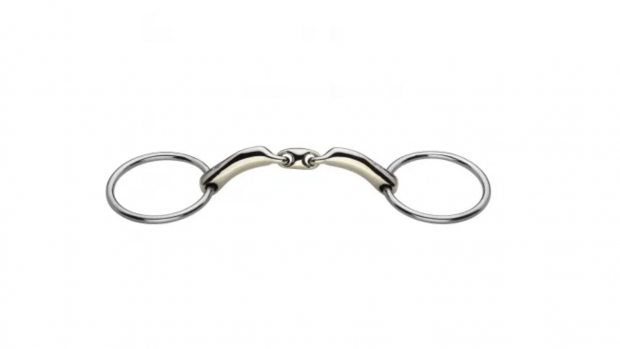DESIGNED and manufactured in America, the Rockin S Snaffle has been growing in popularity over here. H&H decided to find out a bit more about this smooth sweet iron bit.
How does it work?
THE bit was designed to decrease the discomfort at the corners of the horse’s mouth by not pinching. The difference to traditional snaffles is in the cheekpieces — the extra 3in rings at each end of the mouthpiece work independently to disperse the pressure across the lip and cheek. This keeps the bit stable in the mouth and allows the horse to become more responsive to the rider’s aids. The rein is attached to the floating D ring outside the cheek rings.
What horses does it suit?
IT is ideal for horses that are troubled by traditional bits or show resistance — as long as it is not pain-related.
Who uses it?
CAMBRIDGESHIRE-based dressage rider Di Cowell first came across the bit through American trainer Mark Rashid and uses the Rockin S Snaffle on her British Warmblood mare, Flick. Although not currently dressage-legal, she has found great results working at home.
“I’m not a huge disciple of natural horsemanship but I try to take a balanced view of all the ways of training you see and hear about nowadays,” says Di.
“My mare had difficulty accepting the bit so I tried the Rockin S Snaffle which is basically a sweet iron, single-jointed, floating D-ring snaffle. I only wish I could find it in a French-link version. It lessens the pressure on the bars of the mouth and the sweet iron increases salivation and relaxation of the jaw.
“I have tried nearly every snaffle going, but she has accepted the Rockin S better than any.”
Information
AVAILABLE via the internet in 5in and 51/2in mouthpieces.
www.markrashid.com
This Q&A was first published in Horse & Hound (6 December, ’07)



